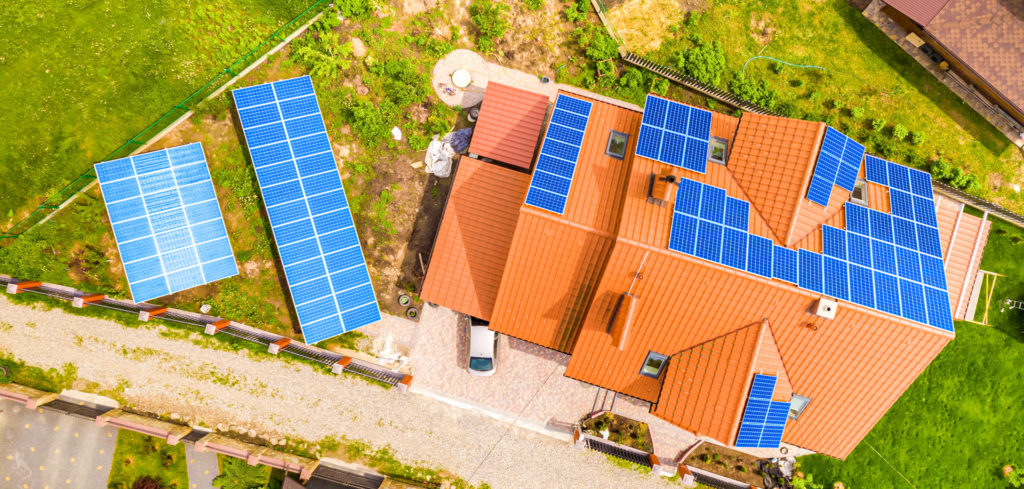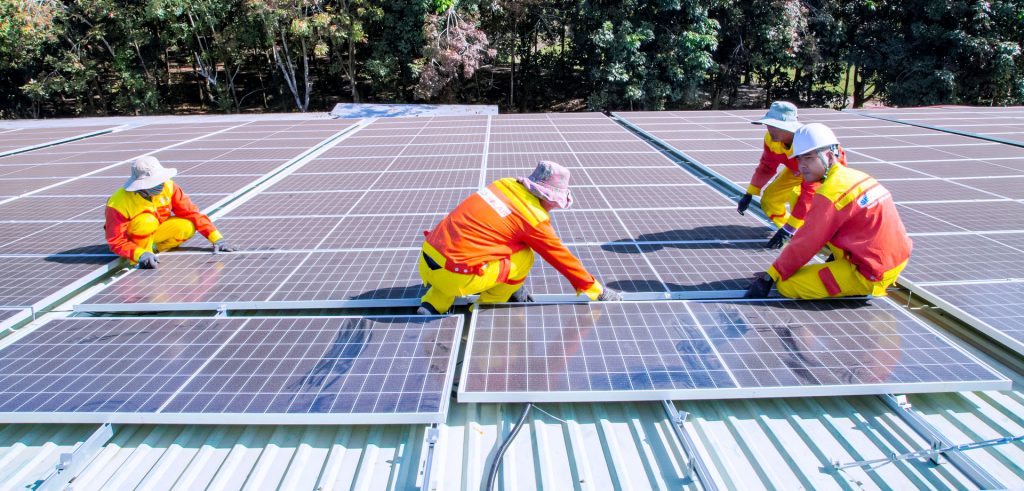Solar panel installation in Phoenix, Arizona presents unique challenges and opportunities due to the region’s climate. The angle of solar panels is one of the most important factors for efficient energy production from sunlight. To optimize energy generation from photovoltaic systems, it is essential to understand how the tilt angle of solar panels affects their performance in this desert environment. This article will provide an overview of the best angles for solar panels in Phoenix, along with other considerations related to optimal panel orientation.
In order to examine the effectiveness of different angles for solar panel placement, a comprehensive analysis must be conducted that takes into account local environmental conditions as well as system design features such as module type, array size and power output requirements. Through such analysis, conclusions can be drawn about which angles are best suited for producing maximum energy yield from any given site in Phoenix. Additionally, special attention should also be paid to seasonal fluctuations in sun exposure that may require manual adjustment of panel configurations throughout the year.
Overview Of Solar Panels
Solar panels harness the energy from sunlight in order to generate electricity. They are composed of photovoltaic cells that absorb and convert solar radiation into direct current (DC) power, which can then be converted into alternating current (AC) through inverters. Solar panel systems typically include an array of modules with a battery storage system, as well as wiring and mounting hardware for installation.
The efficiency of solar panel systems varies depending on location, climate conditions, weather patterns, and other factors such as shade. To maximize their effectiveness, optimal angles should be determined when installing them. In particular, the best angle for solar panels in Phoenix must take into account the area’s local climate conditions and sun exposure levels.
Advantages Of Installing Solar Panels
Installing solar panels in Phoenix can be advantageous due to the city’s abundant sunshine. With an average of over 300 sunny days a year, the area is well-suited for taking advantage of solar energy. The optimal angle to set up a solar panel array in Phoenix depends on many factors such as location and budget. Generally speaking, having the panels tilted at about 30 degrees from horizontal will maximize their efficiency. This tilt also allows them to capture more sunlight during summer months when the sun is higher in the sky than it is during winter months.
Additionally, there are significant financial incentives associated with installing solar panels in Phoenix that further increase the cost savings homeowners may experience by using this method of power generation. These include rebates from Arizona Public Service Company (APS) and tax credits from both state and federal governments. Installing solar panels can lead to long-term savings on electricity bills, making it a wise investment for those looking to reduce their carbon footprint while saving money at the same time.
Azimuth And Altitude In Phoenix
In Phoenix, Arizona, the optimal angle for solar panels is determined by two key factors: azimuth and altitude. Azimuth is defined as the compass direction in which a panel should face to maximize sunlight exposure throughout the day. In Phoenix, this means that the ideal azimuth angle will be facing towards true south. The second factor in determining optimal solar panel placement is altitude or tilt angle of the panels.
This refers to how many degrees above flat (parallel with the ground) the panels are tilted at. For optimum sun exposure, it is recommended that solar panels in Phoenix be angled between 30-45 degrees from horizontal. Taking both these variables into account ensures maximum power output from photovoltaic cells on sunny days in Phoenix. Additionally, when selecting a location for mounting your solar panels ensure there are no obstructions such as trees or buildings blocking direct sunlight access during peak hours of sunshine each day.
Calculating Optimal Tilt Angle
In order to maximize the efficiency of solar panels in Phoenix, it is important to calculate an optimal tilt angle. This can be done by calculating the latitude of Phoenix and determining its height above sea level. The latitude of Phoenix is 33° 27′ N, and its elevation is 1,117 feet (341 m). Using this information, we can calculate that the optimal tilt angle for solar panels in Phoenix is approximately 28 degrees.
This optimal tilt angle allows for maximum exposure to direct sunlight throughout the year as it will align with the sun’s rays at their highest point during each season. Additionally, the mounting system should be adjusted twice a year – once in early June and again in early December – to ensure that the panel remains optimally aligned with respect to seasonal changes in daylight hours and intensity.
Factors Affecting The Tilt Angle
The tilt angle of solar panels in Phoenix is affected by a variety of factors, such as the direction they face, the season and time of year, and their geographic location. Solar panels should be tilted towards the south to maximize exposure to direct sunlight throughout the day. The optimal tilt angle for summer months is different from that for winter months due to seasonal changes in the Sun’s position relative to Phoenix.
During summer months when the sun is higher in the sky, solar panels should be tilted at an angle between 20-30 degrees; whereas during winter months when the sun is lower in the sky, a steeper tilt angle of around 40-50 degrees works best. In addition, geography plays an important role in determining how much daylight reaches each panel: areas with more shade will require flatter angles while those exposed directly to sunlight can have greater angles. After considering all these factors, it becomes clear that finding the optimum tilt angle requires some trial and error as well as taking into account local conditions.
Benefits Of Adjustable Solar Mounts
Adjustable solar mounts provide numerous benefits for Phoenix homeowners. They enable the installation of photovoltaic panels at an angle that is best suited to capturing sunlight in a particular climate and location. This can be particularly beneficial in areas with high levels of insolation, such as Phoenix. Solar panel angles must be adjusted seasonally to capture maximum levels of sunlight throughout the year.
The adjustable mount allows this adjustment without requiring removal or resetting of the entire system. Additionally, they make it easier to clean the panels, since they are accessible from ground level rather than needing ladders or scaffolding to access them. Finally, adjustable solar mounts allow more flexibility when positioning solar arrays on roofs with limited space or unusual roof shapes. This feature makes it possible to install systems even in difficult-to-reach locations where other mounting options may not work.
Tips For Choosing A Professional Installation Company
When installing solar panels, the choice of a professional installation company is essential. Proper research and comparison are necessary to ensure that the best service provider is chosen for the project. It is important to verify credentials, experience and references prior to making any decisions. Additionally, it can be beneficial to look into customer reviews as well as check with local authorities regarding licensing requirements in order to make an informed decision.
In addition to verifying qualifications and experience, when selecting a professional installation company it is beneficial to inquire about warranties offered on both labor and materials used during the installation process. Additional questions should include whether or not they provide technical support after the completion of the job and what their policy is for responding to customer inquiries or concerns. Furthermore, information concerning payment terms should also be discussed with potential providers before signing any contracts.



